Topics
Top Facts About Maharana Pratap
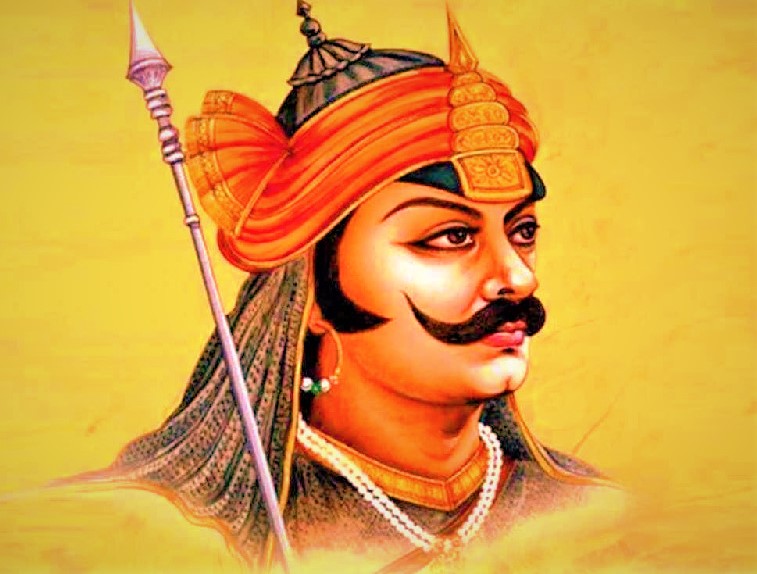
| S.No. | Particulars | Description |
|---|---|---|
| 1. | Name | Kunwar Pratap Ji (Shri Maharana Pratap Singh Ji) |
| 2. | Born | May 9, 1540 A.D. |
| 3. | Birthplace | Kumbhalgarh, Rajasthan |
| 4. | Death anniversary | January 29, 1597 A.D. |
| 5. | Father | Shri Maharana Udai Singh Ji |
| 6. | Mother | Queen Jeevat Kanwar Ji |
| 7. | Spouse | Maharani Ajadeh was the first wife of Maharana Pratap |
| 8. | Height | 7.5 ft. |
| 9. | Reign period | 1568-1597 AD |
| 10. | Rule period | 29 years |
| 11. | Dynasty | Suryavansh |
| 12. | Royal–Dynasty | Sisodia |
| 13. | Royal family | Rajputana |
| 14. | Religious Belief | Hinduism |
| 15. | War | Battle of Haldighati |
| 16. | Capital | Udaipur |
| 17. | Predecessor | Maharana Udai Singh |
| 18. | Successor | Rana Amar Singh |
| 19. | State | Mewar |
History
Maharana Pratap was born in Mewar, Rajasthan on 9 May 1540. Maharana Udai Singh II was his father and Rani Jeevant Kanwar was his mother. The Mewar kingdom, with its capital on Chittor, was ruled by Maharana Udai Singh II. Maharana Pratap was the eldest of 25 sons, and therefore the Crown Prince was awarded the title. In the line of the Sisodiya Rajputs, he was destined to be the 54th leader of Mewar.
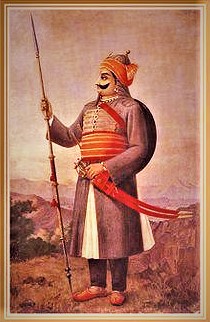
In 1567, when Crown Prince Pratap Singh was only 27 years old, Chittor was surrounded by the Mughal army of Emperor Akbar. Rather than capitulate to the Mughals, Maharana Udai Singh II choose to leave Chittor and relocate his family to Gogunda. The young Pratap Singh wanted to stay and fight the Mughals, but the elders intervened and convinced him to leave Chittor, completely unaware that his departure from Chittor would make history for all time.
In Gogunda, Maharana Udai Singh II and his nobles established a Mewar kingdom government. When the Maharana died in 1572, Crown Prince Pratap Singh took over as Maharana. However, in his later years, the late Maharana Udai Singh II was swayed by his favorite queen, Rani Bhatiyani, and desired that her son Jagmal ascend to the throne. Pratap Singh, the Crown Prince, decided to accompany the late Maharana’s body as it was being transported to the cremation grounds. The Crown Prince did not accompany the body of the deceased Maharana but instead prepared to ascend the throne, ensuring that the line of succession remained unbroken. In deference to his father’s wishes, Pratap Singh decided to hand over the throne to his half-brother Jagmal. However, knowing that this would be disastrous for Mewar, the late Maharana’s nobles, particularly the Chundawat Rajputs, forced Jagmal to abdicate the throne and hand over the throne to Pratap Singh. Unlike Bharat, Jagmal did not willingly abdicate the throne. Instead, he vowed vengeance and set out for Ajmer to join Akbar’s armies, where he was offered a jagir – the town of Jahazpur – in exchange for his assistance. Meanwhile, Crown Prince Pratap Singh was promoted to Maha Rana Pratap Singh I, the 54th ruler of Mewar in the Sisodiya Rajput line.
It was the year 1572. Pratap Singh had only recently been crowned Maharana of Mewar, and he hadn’t been back in Chittor since 1567. His old fort and home called to him. The young Maharana was deeply troubled by his father’s death and the fact that his father had never been able to see Chittor again. But he wasn’t the only one who was troubled at the time. Akbar ruled over Chittor but not the kingdom of Mewar. So long as the people of Mewar swore allegiance to their Maharana, Akbar’s ambition of becoming the Jahanpanah of Hindustan remained unfulfilled. He had sent several emissaries to Mewar to persuade Rana Pratap to sign a treaty, but the letter was only willing to sign a peace treaty that would preserve Mewar’s sovereignty. Throughout the year 1573, Akbar dispatched six diplomatic missions to Mewar in an attempt to persuade Rana Pratap to accept the former’s suzerainty, but Rana Pratap turned each one down. The last of these missions was led by Raja Man Singh, Akbar’s brother-in-law. Maharana Pratap enraged that his fellow Rajput was aligned with someone who had forced all Rajputs to submit, refused to cooperate with Raja Man Singh. The battle lines had been drawn, and Akbar realized that Maharana Pratap would never submit and that he would have to use his troops against Mewar.
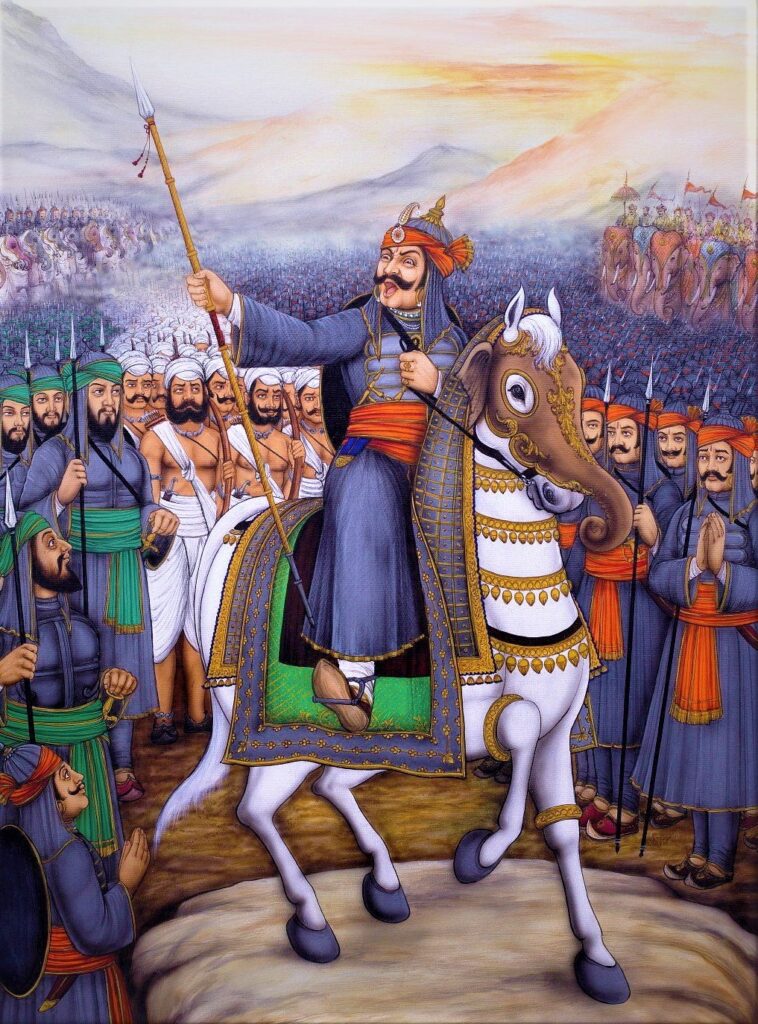
With the failure of peace treaty negotiations in 1573, Akbar cut Mewar off from the rest of the world, alienating Mewar’s traditional allies, some of whom were Maharana Pratap’s own kith and kin. Akbar then attempted to turn the people of the crucial Chittor district against their king so that they would not aid Pratap. He appointed Kunwar Sagar Singh, Pratap’s younger brother, to rule the conquered territory. However, Sagar soon returned from Chittor, regretting his own treachery, and committed suicide with a dagger in the Mughal Court. Shakti Singh, Pratap’s younger brother who is now in the Mughal army, is said to have temporarily fled the Mughal court and warned his brother of Akbar’s actions.
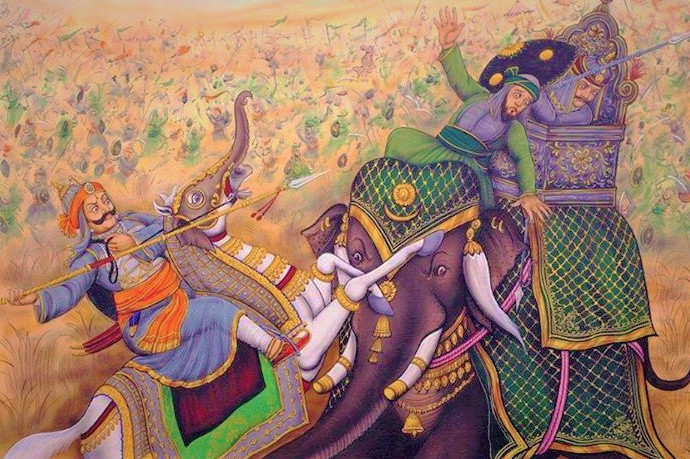
Maharana Pratap changed his administration in preparation for the impending war with the Mughals. He relocated his capital to Kumbhalgarh, his birthplace. He ordered his subjects to depart for the Aravali mountains, leaving nothing behind for the approaching enemy – the war would be fought in mountain terrain, which the Mewar army was accustomed to but the Mughals were not. The fact that the young king’s subjects obeyed him and fled to the mountains demonstrates the young king’s respect among his subjects. The Aravalis Bhils were completely behind him. The Mewar army now raided Mughal trade caravans traveling from Delhi to Surat. A section of his army stood guard at the crucial Haldighati Pass, the only way into Udaipur from the north. Maharana Pratap himself undertook several penances, not because his finances required it, but because he wanted to remind himself, and all his subjects, why they were going through this pain – to reclaim their freedom, their right to exist as they pleased. He vowed that he would eat from leaf plates, sleep on the floor, and not shave. The Maharana lived in mud-huts made of mud and bamboo in his self-inflicted poverty. The famous battle of Haldighati, fought in 1576, pitted 20,000 Rajputs against an army of 80,000 Mughals led by Raja Man Singh. To the surprise of the Mughal army, the battle was fierce but indecisive. Although Maharana Pratap’s army was not defeated, he was surrounded by Mughal soldiers. At this point, his estranged brother, Shakti Singh is said to have appeared and saved Rana’s life. Another casualty of the war was Maharana Pratap’s famous and loyal horse Chetak, who died while attempting to save his Maharana.
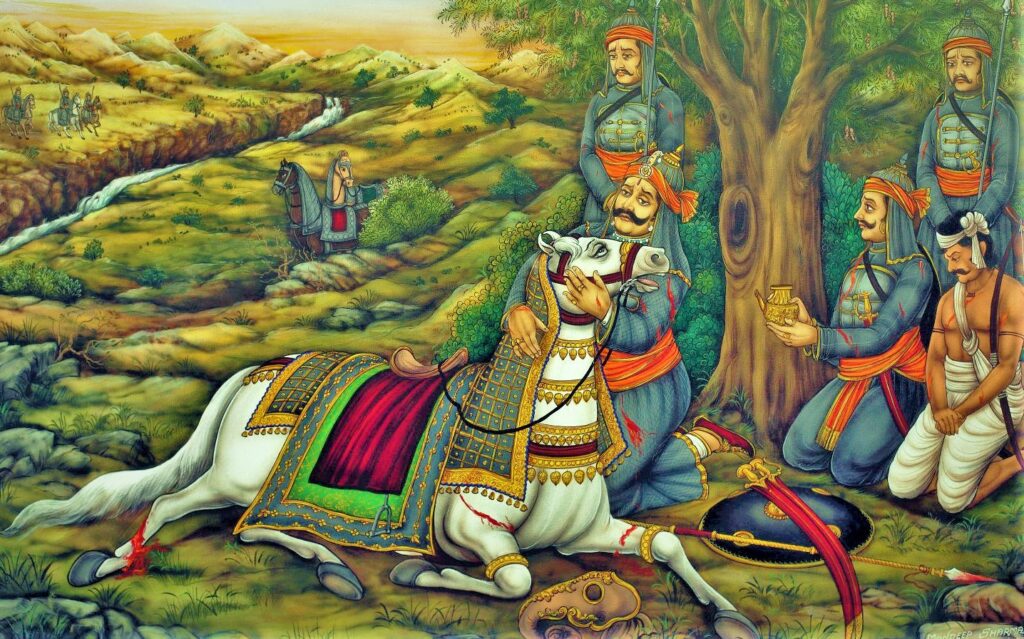
And after this war, Akbar attempted to take over Mewar several times, each time failing. Maharana Pratap himself was continuing his quest to reclaim Chittor. However, the Mughal army’s relentless attacks had weakened his army, and he barely had enough money to keep it going. It is said that at this time, one of his ministers, Bhama Shah came and offered him all of this wealth – a sum large enough to support a 25,000-man army for 12 years. Before this generous gift from Bhama Shah, Maharana Pratap anguished at the state of his subjects is said to have begun to lose his spirit in fighting Akbar.
His children’s meal – grass bread – was stolen by a dog in one incident that caused him great pain. This is said to have struck a deep wound in Maharana Pratap’s heart. He began to have reservations about his steadfast refusal to submit to the Mughals. Perhaps it was during one of these moments of self-doubt, which every human being experienced, that Maharana Pratap wrote to Akbar, requesting “a mitigation of his hardship”. Overjoyed at this sign of his valiant foe’s surrender, Akbar commanded public jubilation and showed the letter to Prince Prithiraj, a literate Rajput at his Court. He was the younger brother of Rai Singh, the ruler of Bikaner, a state founded by the Rathores of Marwar some eighty years before. He was forced to serve Akbar as a result of his kingdom’s submission to the Mughals. Prithiraj, an award-winning poet, was also a brave warrior and a longtime admirer of Maharana Pratap Singh. Maharana Pratap’s decision astounded and grieved him, and he informed Akbar that the note was a forgery intended to defame the Mewar king. “I know him well,” he said, “and he would never agree to your terms”. He asked for and received Akbar’s permission to send a letter to Pratap, ostensibly to ascertain the truth of his submission, but in reality to prevent it. He wrote the couplets that became famous in the annals of patriotism.
The Hindu’s hopes are on the Hindu, but still, the Rana abandons them. But for Pratap, Akbar would put everyone on the same level, because our chiefs have lost their valor and our females have lost their honor. Akbar is the broker in our race’s market: he has purchased all but Udai’s son (Singh II of Mewar); he is beyond his price. What true Rajput would give up honor for nine days (nauroza), yet how many have done so? Will Chittor make an appearance at this market? Despite the fact that Patta (an affectionate name for Pratap Singh) has squandered wealth (on warfare), he has kept this treasure. Despair has driven man to this market to witness their dishonor: from such ignominy, only Hamir Singh’s descendant (Hamir Singh) has been preserved. The world wonders where Pratap’s hidden assistance comes from. Only the soul of a man and his sword. The broker in the men’s market (Akbar) will be surpassed one day; he cannot live forever. Then our race will come to Pratap to sow the Rajput seed in our desolate lands. All look to him for its preservation, so that its purity can be restored.
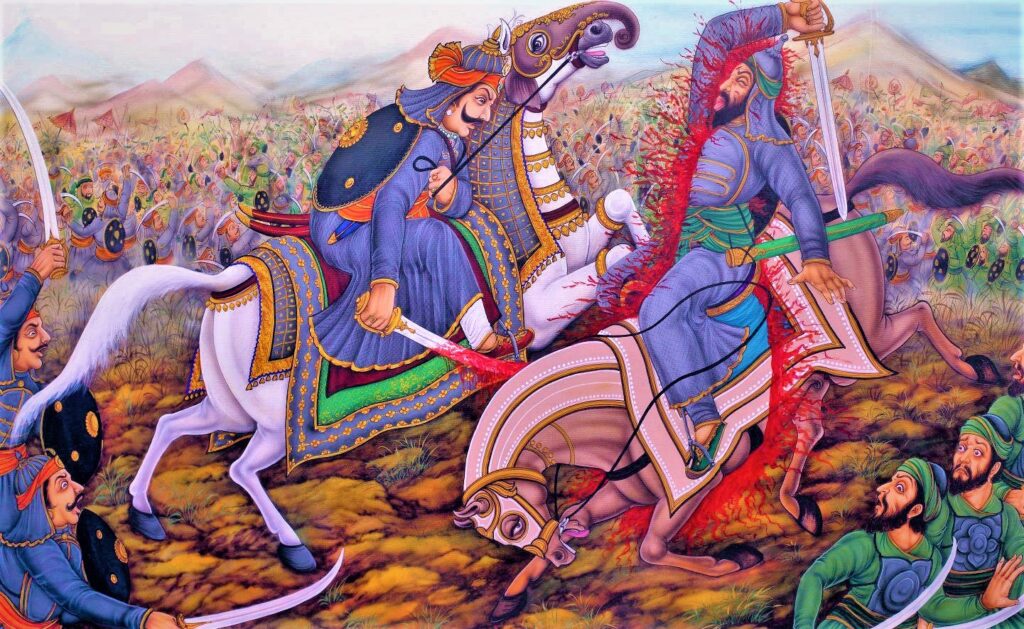
Pratap reversed his decision and did not submit to the Mughals, as had been his initial but hesitant plan, thanks to the now-famous letter. Akbar abandoned his obsessive pursuit of Maharana Pratap after 1587 and moved his wars to Punjab and India’s Northwest Frontier. Maharana Pratap ruled in relative tranquillity for the last ten years of his life, eventually freeing most of Mewar, including Udaipur and Kumbhalgarh, but not Chittor. “Maharana Pratap Singh was dubbed the light and life of the Hindu society, and there were times when he and his family and children ate grass bread,” says Bhagwat Singh Mewar. Maharana Pratap became an arts patron. Padmavat Charita and Dursa Ahada’s poems were penned during his reign. His passion for architecture may be seen in the palaces of Ubheshwar, Kamal Nath, and Chavand. The walls of these structures, which are built in the deep mountainous forest, are ornamented with military-style architecture. However, in his later years, Pratap’s broken spirit overtook him. When he swore his successor, Crown Prince Amar Singh, to endless struggle against the opponents of his country’s independence, it was a fitting end to his life. Maharana Pratap never succeeded in reclaiming Chittor, yet he never gave up trying.
Rana Pratap Singh I, Mewar’s greatest hero, was gravely injured in a hunting accident in January 1597. On January 29, 1597, he died at the age of 56 at Chavand. He gave his life fighting for his country, his people, and, most importantly, his honor.

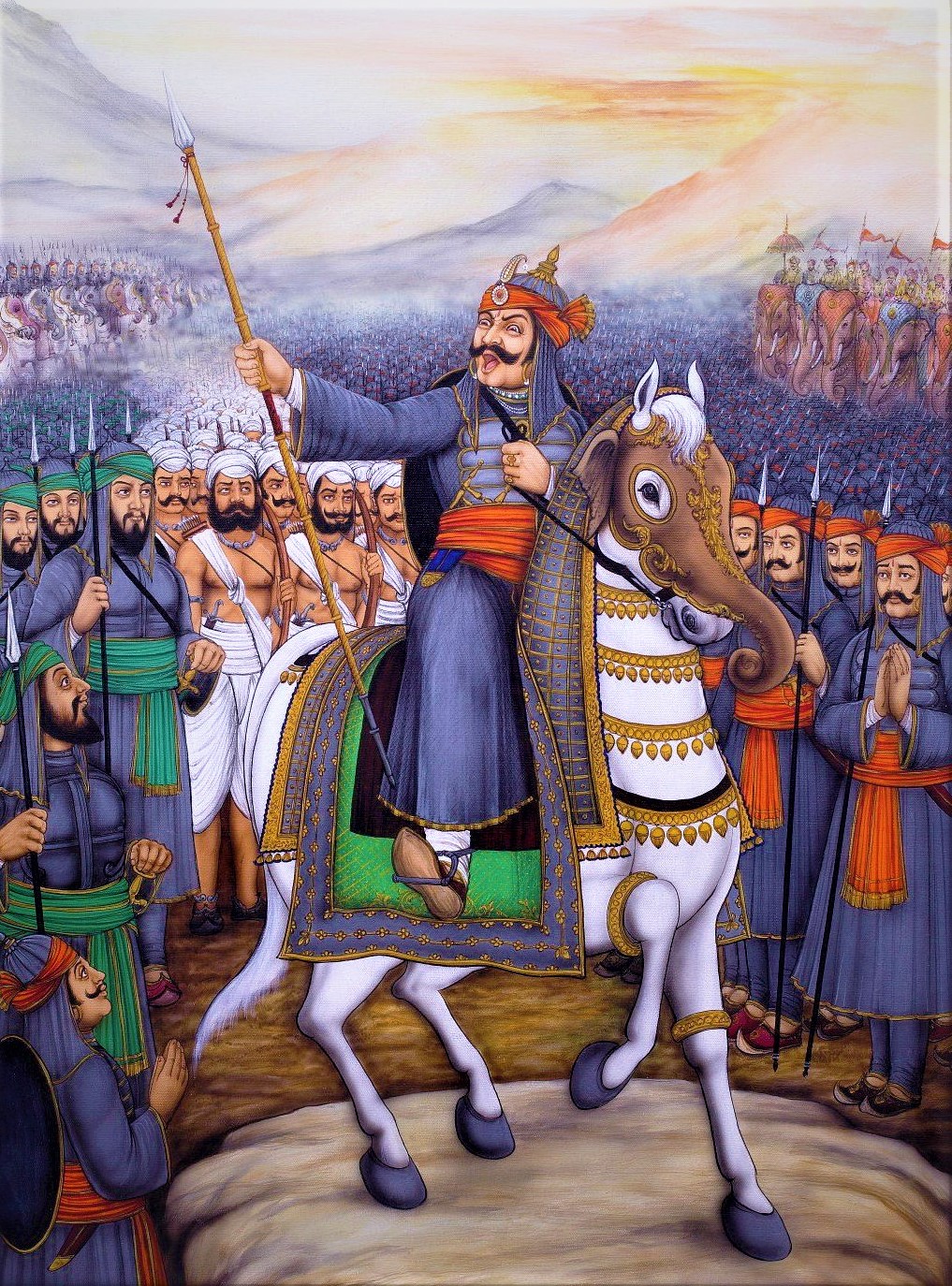
13 thoughts on “Maharana Pratap | Top Facts About Maharana Pratap”